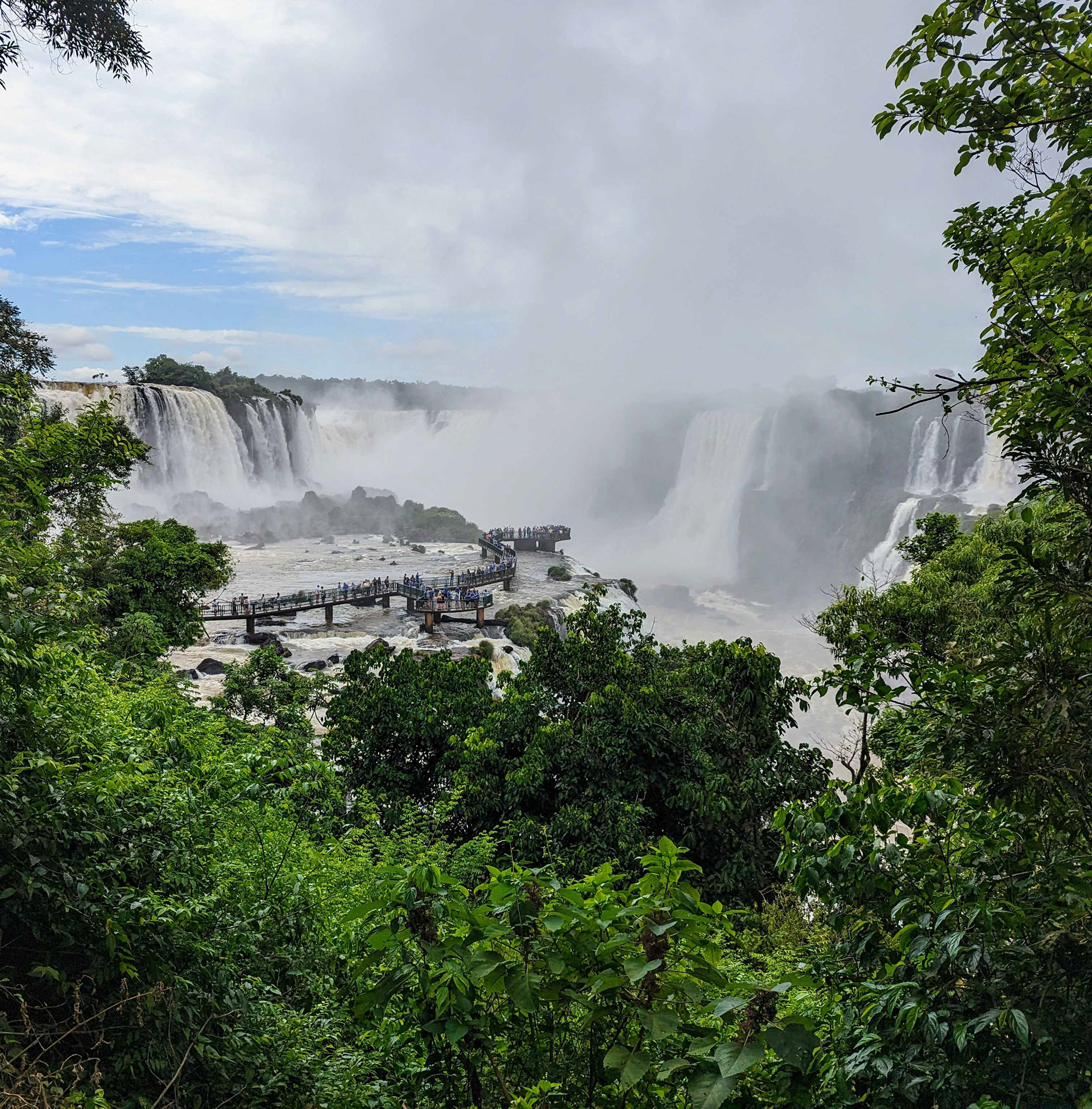I love visiting and photographing waterfalls. However they are not always the easiest places to whip out your camera and start snapping. In this photo story I want to share some tips about waterfall photography which you may find useful. I won't get too technical as there are lots of resources on line for that. These tips are, I hope, ideal for a more casual photographer and not too overwhelming with jargon and detail. If you would like a more detailled overview you can follow this link to an article on the Digital Photography School.
Firstly when I talk about waterfalls, these tips are not exclusively for a trip to somewhere huge like Niagara. Any small cascade/weir along a river or stream is a possibility as well as holiday walks in places such as the Lake District, Wales or Scotland. For example, Cornwall isn't famous for it's waterfalls but there are several places in woods and gardens where small spouts or falls can be found. So, if you want to get out and try this locally, do some research about suitable places near your home.
Waterfalls often require a walk to get to them and sometimes the ground is uneven or slippery. I would recommend you keep your gear in a rucksack to protect it from being dropped or damaged in the event of an unexpected trip rather than hanging from your neck or wrist. Additionally they are often damp places, especially when the falls are big or in full flood. A waterproof pouch is a great idea for your phone and easy to use if you are right in the splash zone. These cases are cheap, effective and readily available online. A small cloth to dry the lens is also a handy accessory.
Waterproof cases are available for cameras too but to be honest if the moisture is really bad I tend not to get the 'Big Boy' out and just stick with the phone in it's pouch. However there is kit out there for the more adventurous or serious waterfall photographer to keep everything dry.
If your gear does get damp it is essential to dry it out properly. I save the little silica bags you often find in packaging and always keep several in my camera bag and lens sacks in case it rains and I get caught out. As soon as I get home I get everything out of the bag and cases and stand the camera and lenses in a place safe from knocks to dry out naturally.
Firstly when I talk about waterfalls, these tips are not exclusively for a trip to somewhere huge like Niagara. Any small cascade/weir along a river or stream is a possibility as well as holiday walks in places such as the Lake District, Wales or Scotland. For example, Cornwall isn't famous for it's waterfalls but there are several places in woods and gardens where small spouts or falls can be found. So, if you want to get out and try this locally, do some research about suitable places near your home.
Waterfalls often require a walk to get to them and sometimes the ground is uneven or slippery. I would recommend you keep your gear in a rucksack to protect it from being dropped or damaged in the event of an unexpected trip rather than hanging from your neck or wrist. Additionally they are often damp places, especially when the falls are big or in full flood. A waterproof pouch is a great idea for your phone and easy to use if you are right in the splash zone. These cases are cheap, effective and readily available online. A small cloth to dry the lens is also a handy accessory.
Waterproof cases are available for cameras too but to be honest if the moisture is really bad I tend not to get the 'Big Boy' out and just stick with the phone in it's pouch. However there is kit out there for the more adventurous or serious waterfall photographer to keep everything dry.
If your gear does get damp it is essential to dry it out properly. I save the little silica bags you often find in packaging and always keep several in my camera bag and lens sacks in case it rains and I get caught out. As soon as I get home I get everything out of the bag and cases and stand the camera and lenses in a place safe from knocks to dry out naturally.
Ironically dull damp days can bring some of the best conditions to shoot waterfalls as the colours look are better without the harshness of full sunlight. If it is a cloudy day, I would try not to include sky in my shots as it can make the scene feel drab. Obviously if you are only visiting a place once then you have to work with the conditions you have on the day but if there is a place you can visit often, you can experiment in differing conditions and see what you like best.
Darker days will also make it easier for photographers to use longer shutter speeds. Shutter speeds can adjusted to change the appearance of the water in your images. A quick shutter speed will freeze moving water while a longer exposure will create a silky, artistic effect.
Darker days will also make it easier for photographers to use longer shutter speeds. Shutter speeds can adjusted to change the appearance of the water in your images. A quick shutter speed will freeze moving water while a longer exposure will create a silky, artistic effect.
Some areas where waterfalls are situated are naturally dark and secluded. You can use these shadows to add atmosphere and mood to your photos.
The amount of light available will contribute to how quick or slow the shutter speed must be set to produce a good image (without using filters) but if you are looking to take images with longer shutter speeds, using a tripod is necessary to take crisp shots. A shutter release cable is also a worthwhile addition too to guard against any unintended camera shake as you take a photo. Sometimes you can get away with using a handy stone or object to rest the camera on if you don't have a tripod to hand but the results can be mixed so my adivce would be to take more than one image, especially if you have a continous shot facility. You have more chance of finding a sharp image in a group of shots rather than a one off.
How 'milky' you like your water in these longer exposed images is all personal taste, so I would recommend experimenting and over time you will work out what you like best. Some phones will also have a long exposure setting so it is possible to create similar effects without having a big camera in tow.
My final tip is look for the opportunities to take both wide angle shots and close ups. The wide angled view can illustrate the size of your waterfall (especially if there is someone in the shot) and show it in the context of it's enviroment whilst the detail images can highlight things like the power of the falls or the habitats by the water.
Below are a series of some of my waterfall images that I have taken over the years. Hopefully some will inspire you to find a waterfall near you and start creating some waterfall photos of your own. I have included captions for explanation.
The amount of light available will contribute to how quick or slow the shutter speed must be set to produce a good image (without using filters) but if you are looking to take images with longer shutter speeds, using a tripod is necessary to take crisp shots. A shutter release cable is also a worthwhile addition too to guard against any unintended camera shake as you take a photo. Sometimes you can get away with using a handy stone or object to rest the camera on if you don't have a tripod to hand but the results can be mixed so my adivce would be to take more than one image, especially if you have a continous shot facility. You have more chance of finding a sharp image in a group of shots rather than a one off.
How 'milky' you like your water in these longer exposed images is all personal taste, so I would recommend experimenting and over time you will work out what you like best. Some phones will also have a long exposure setting so it is possible to create similar effects without having a big camera in tow.
My final tip is look for the opportunities to take both wide angle shots and close ups. The wide angled view can illustrate the size of your waterfall (especially if there is someone in the shot) and show it in the context of it's enviroment whilst the detail images can highlight things like the power of the falls or the habitats by the water.
Below are a series of some of my waterfall images that I have taken over the years. Hopefully some will inspire you to find a waterfall near you and start creating some waterfall photos of your own. I have included captions for explanation.
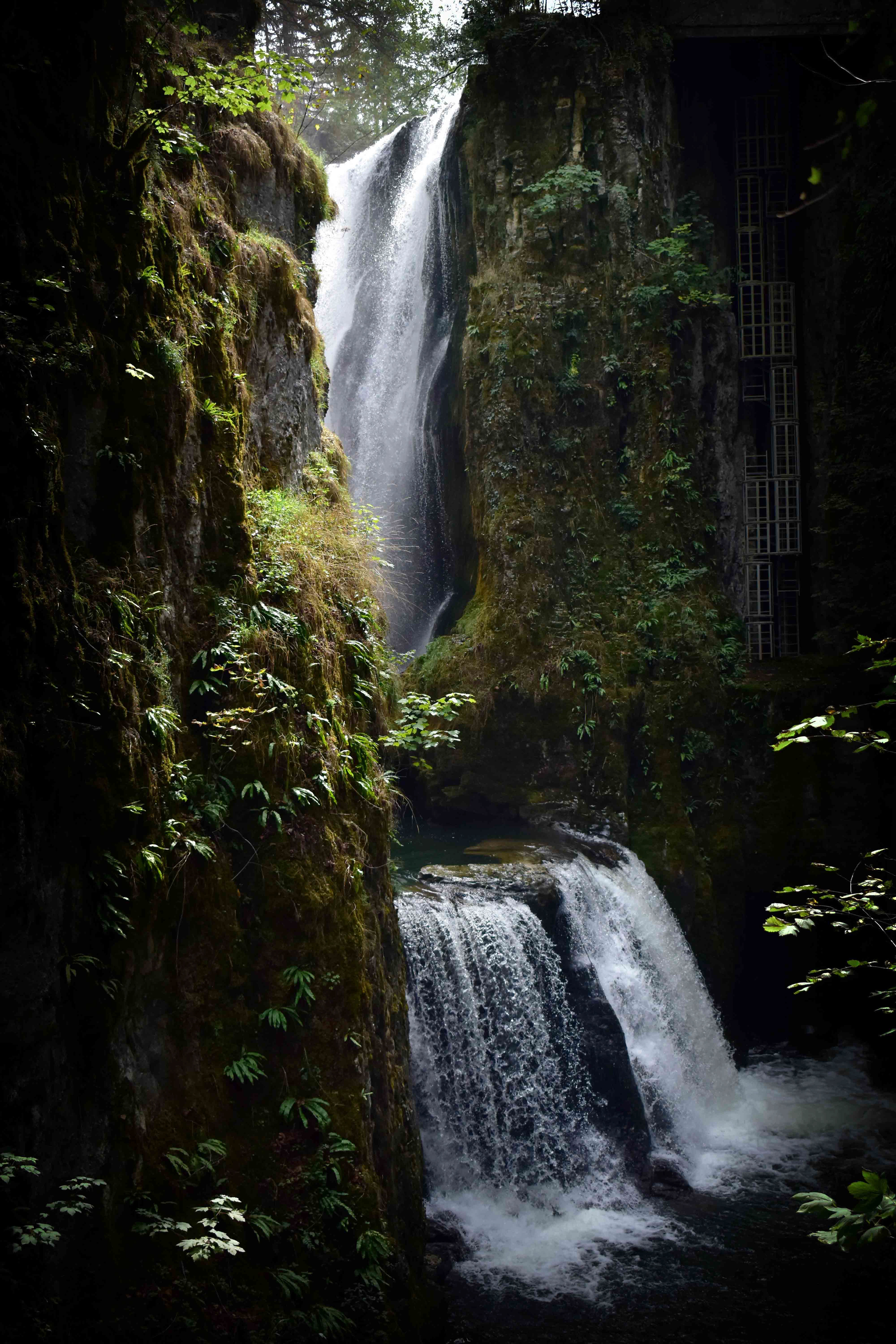
Embrace the darkness for moody shots
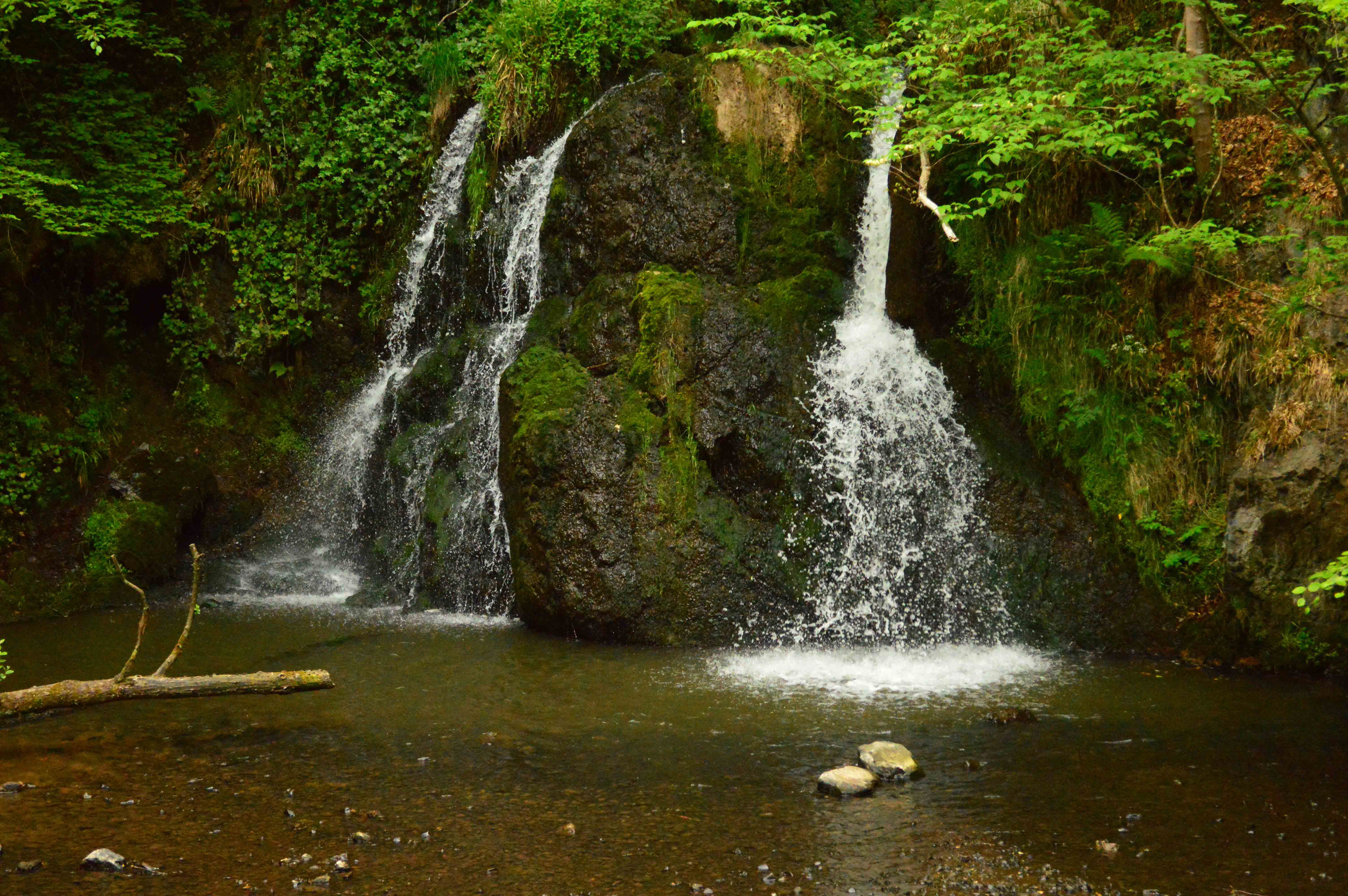
A fast shutter speed looks a bit meh...
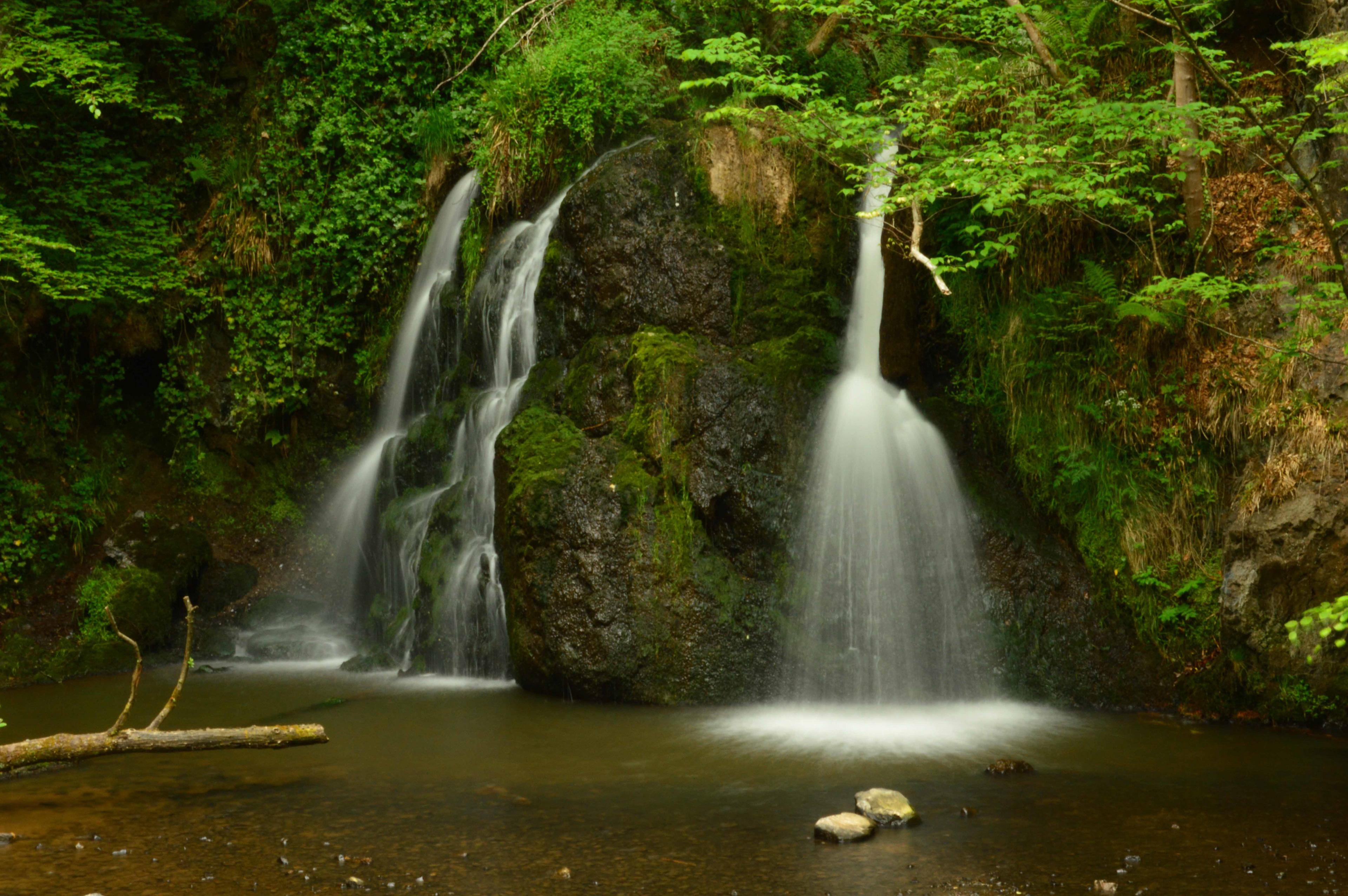
... whereas the same waterfall with a longer shutter speed looks much better
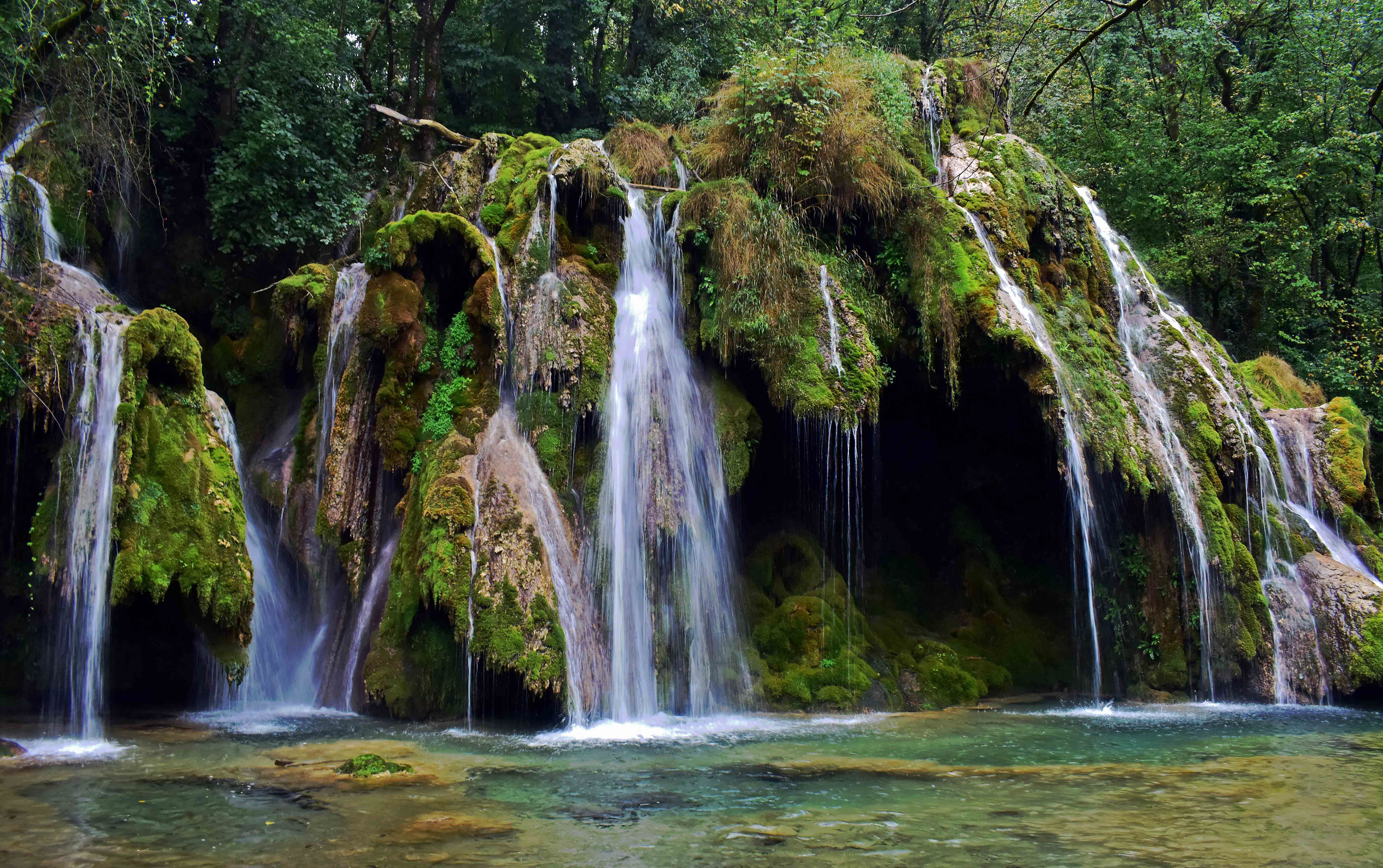
Thin ribbons look better with a longer exposure

I compromised on shutter speed as this was a hand held shoot. The result is a hybrid - a little bit milky but still some detail in the whiteness

Longer shutter speed and a black and white experiment
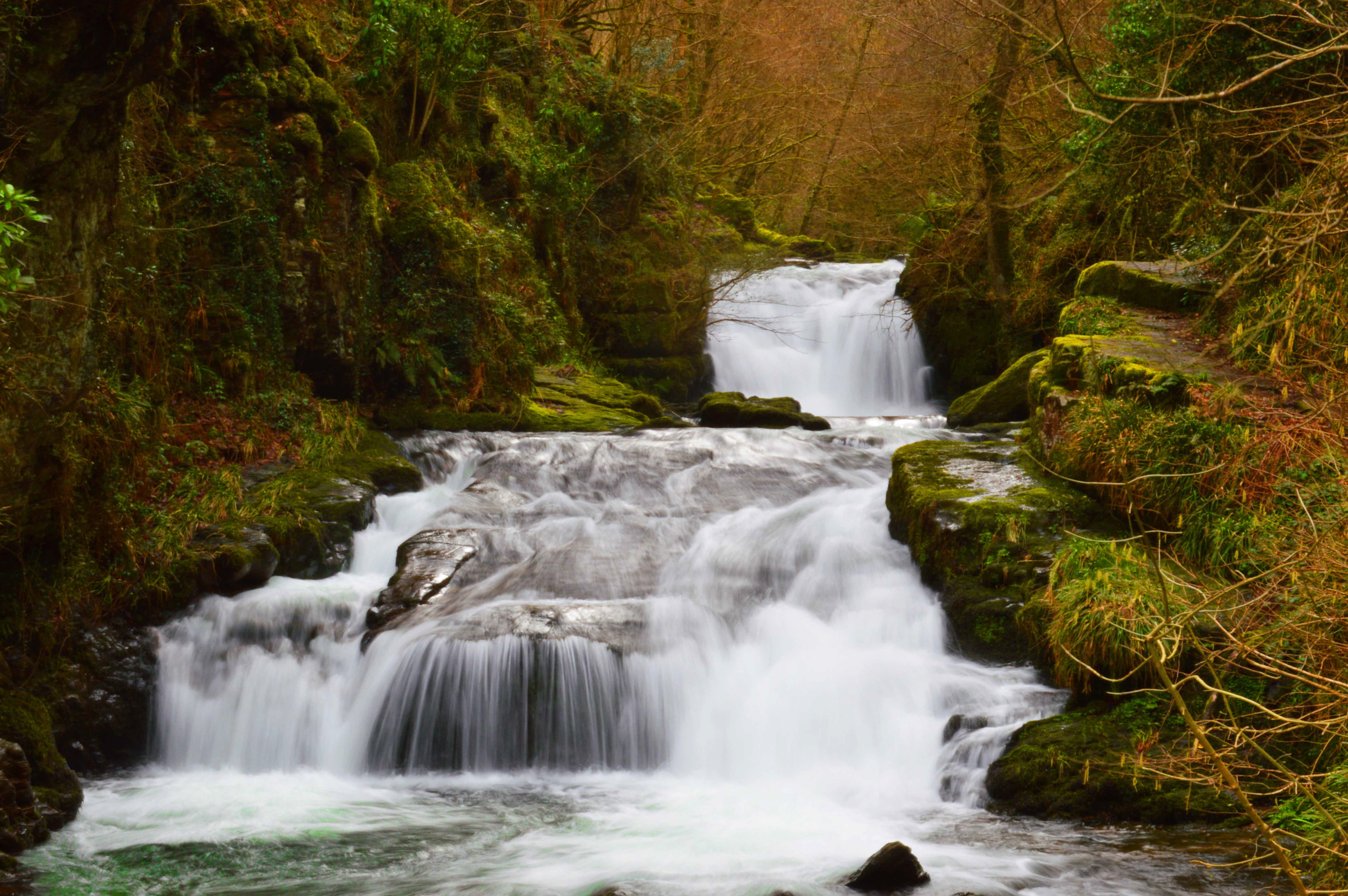
A grey day bought out the colours at Watersmeet
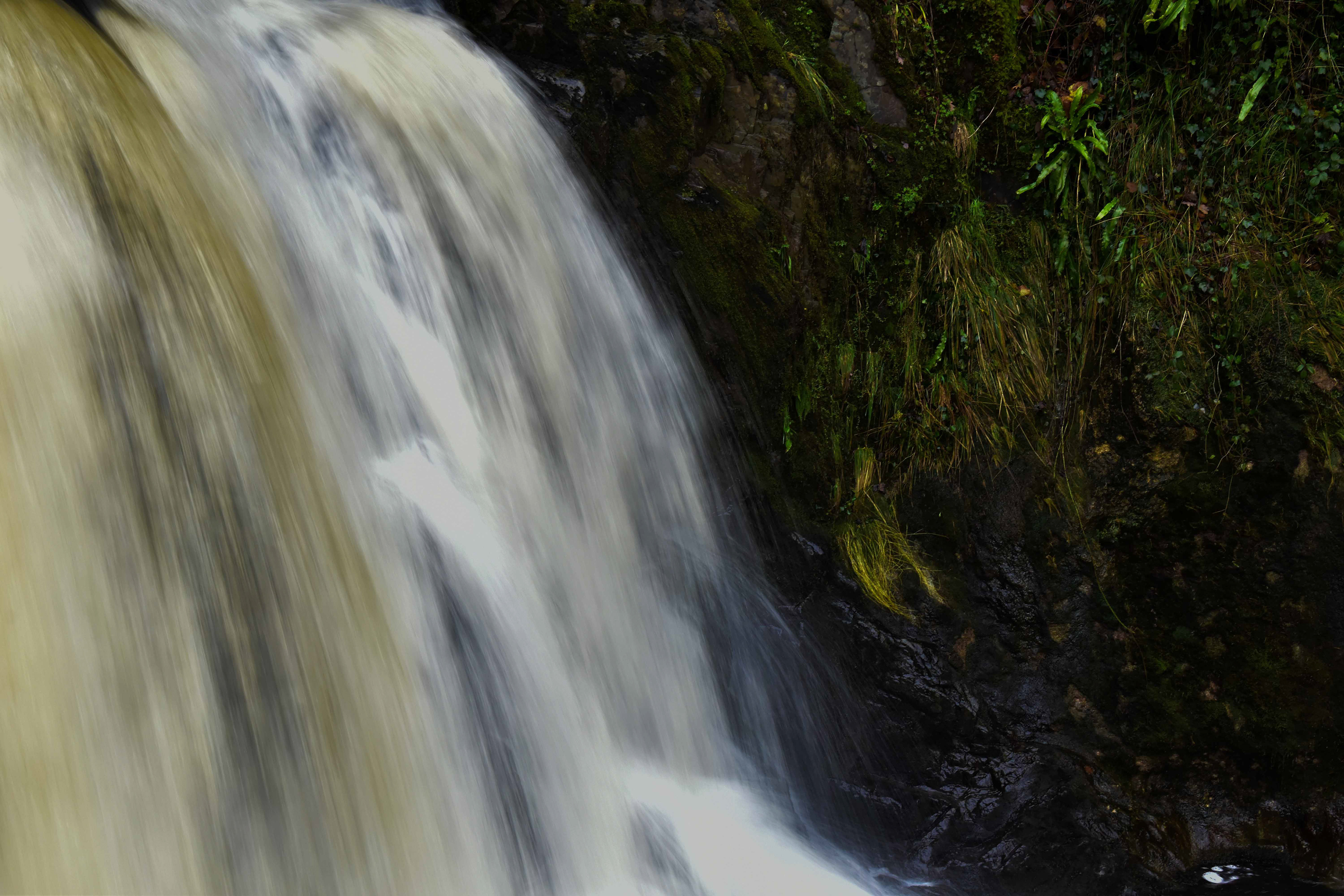
An abstract waterfall shot
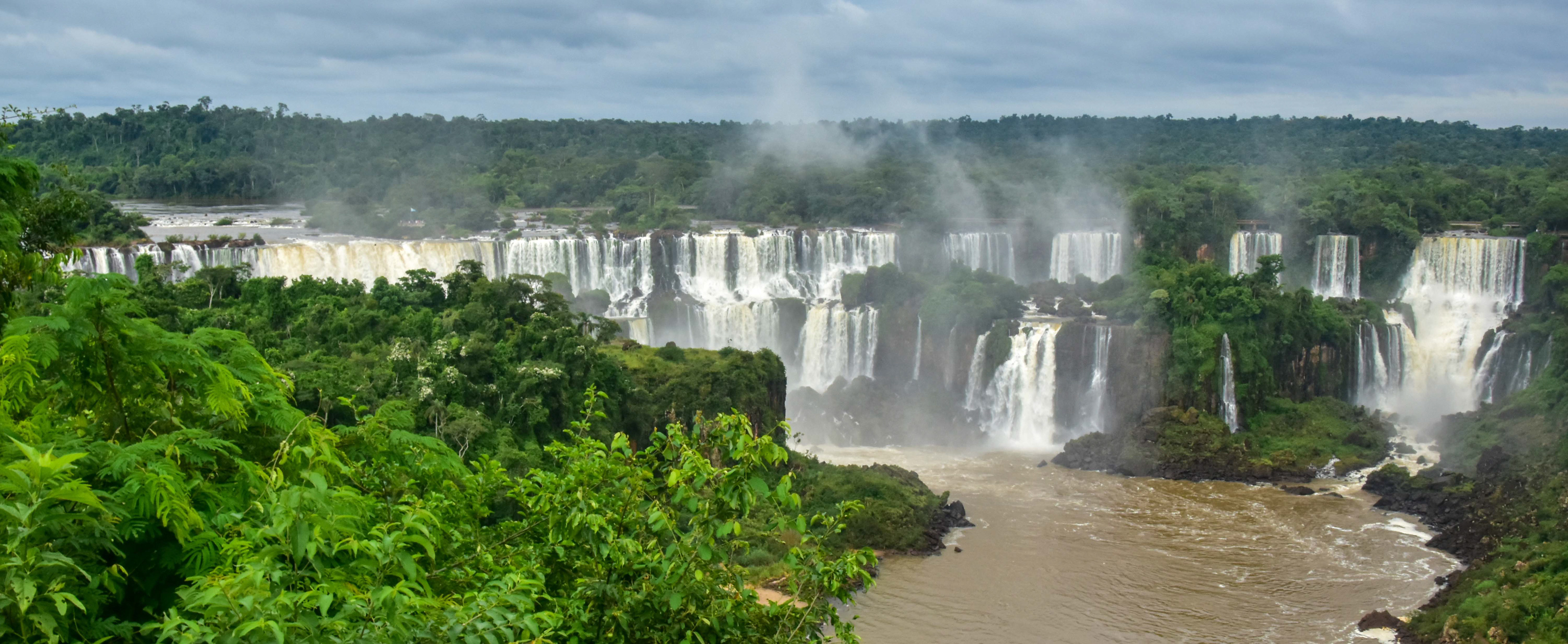
A long thin crop gives a panaromic effect

Trying to capture the power
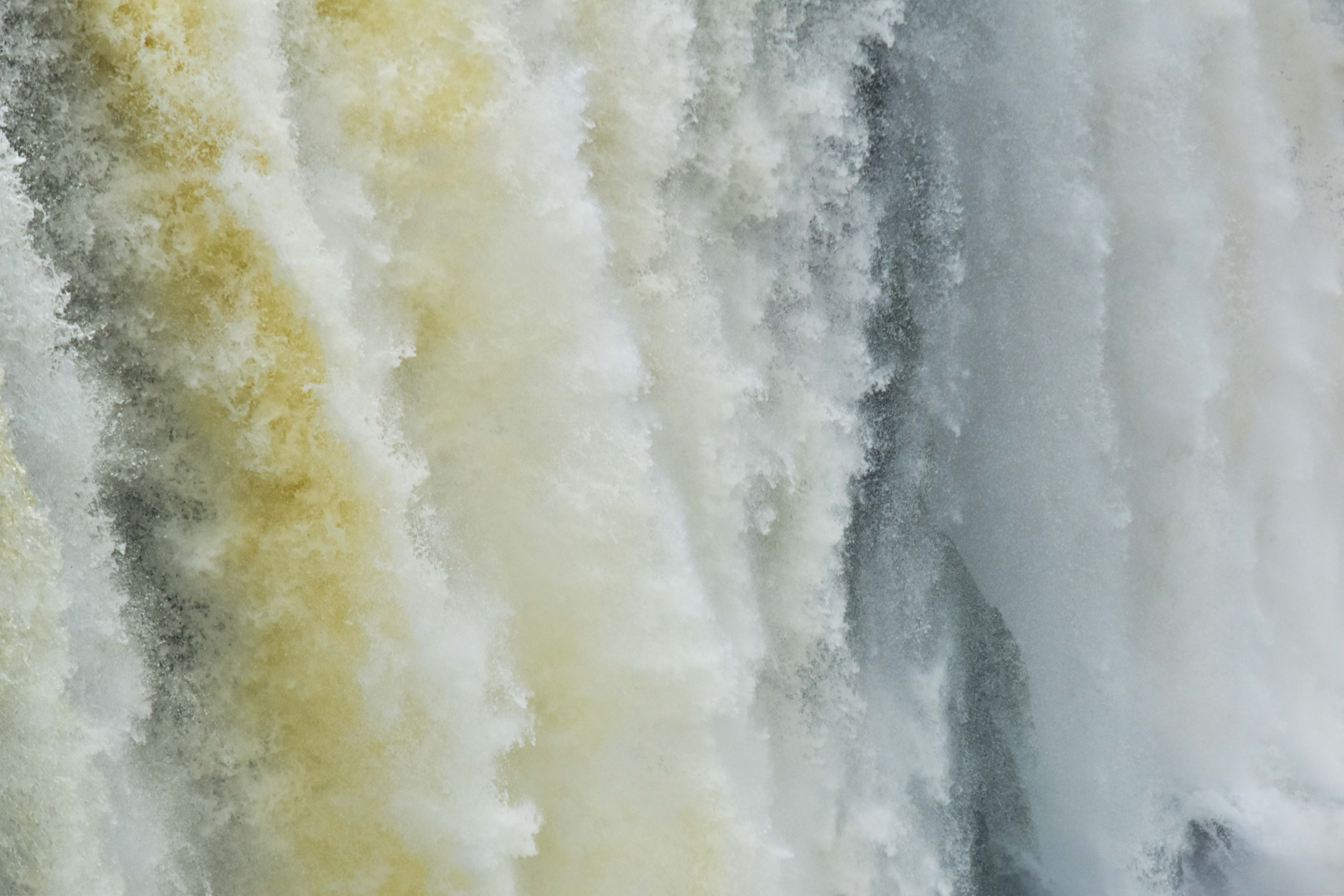
Abstract detail
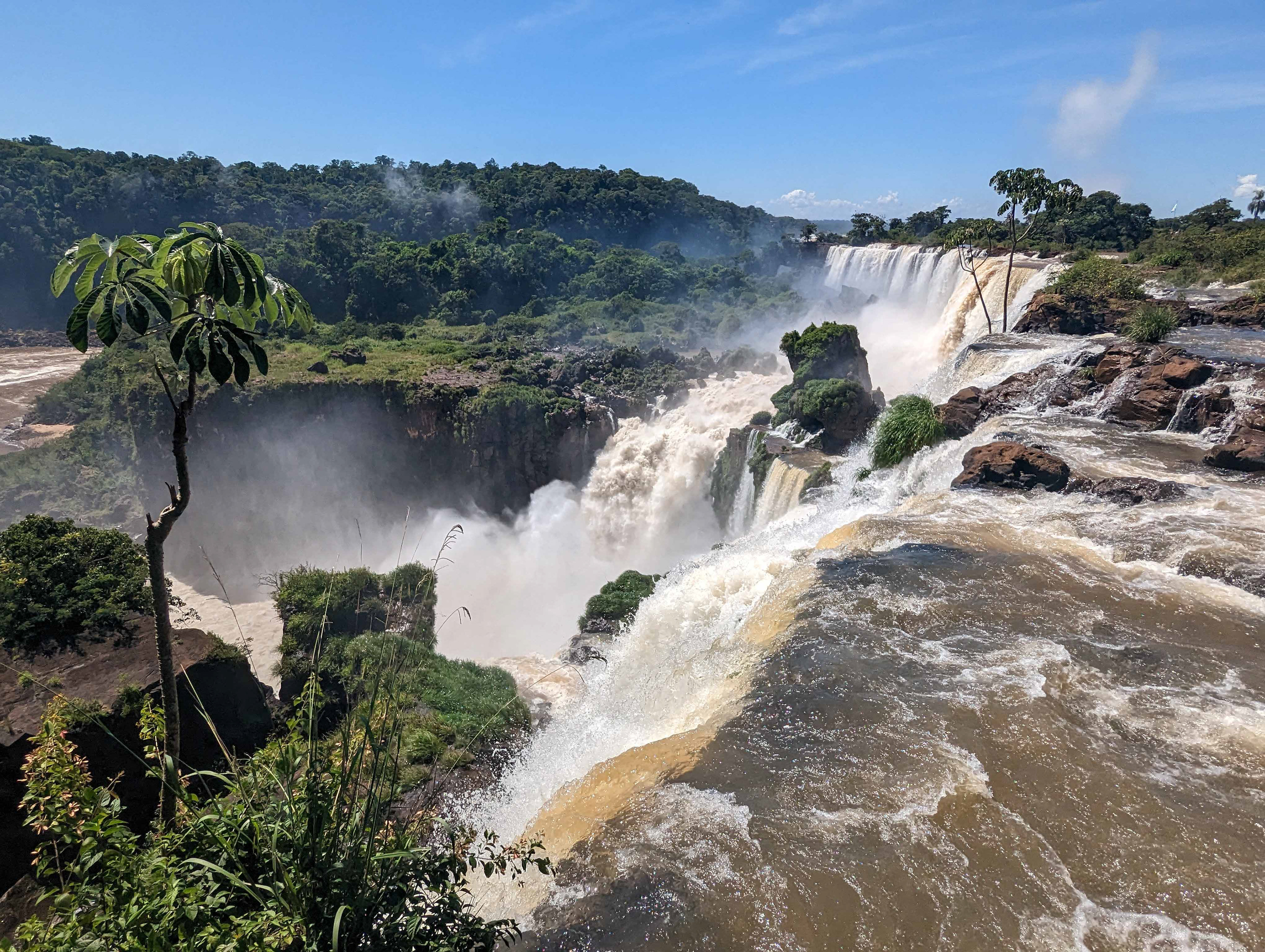
Looking over the edge gives a different perspective
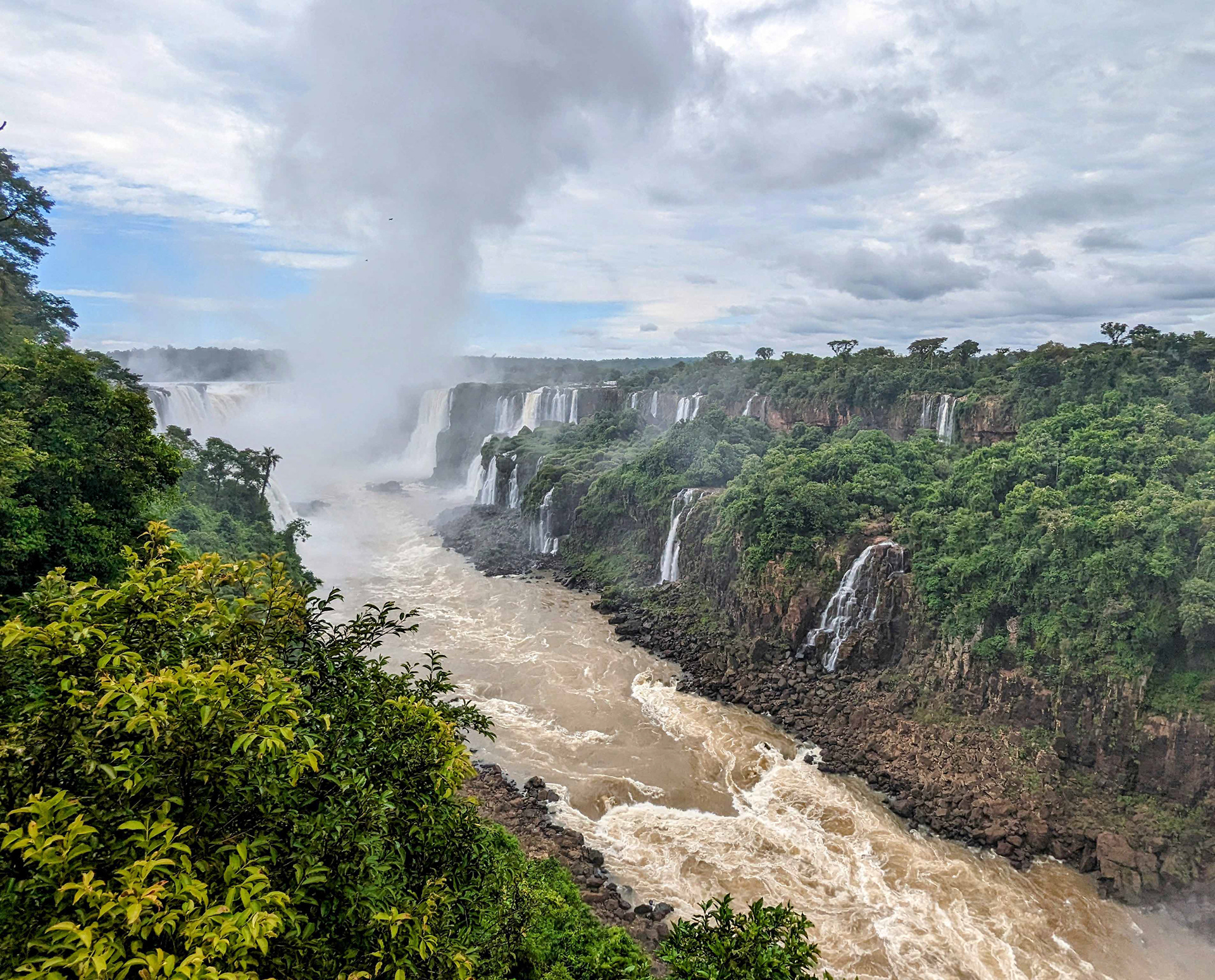
A wider angle to show context
